RIGHT TURN ONLY!!
This Vinland Is Your Vinland
by Carlo Santos,

What? The PS4 is out already?! I'm still busy enjoying everything that my PS3 does. Like the cheapskate I am, I'll probably wait for a returned unit or a refurb before I jump aboard the PS4 bandwagon. And even then, I would have to consult with my conscience and economic situation as to whether there's a good reason for me to own a new Playstation yet. So go the struggles of being a "responsible" adult...
07-GHOST
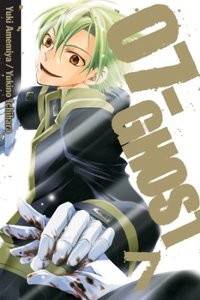
Vol. 7
(by Yuki Amemiya and Yukino Ichihara, Viz Media, $9.99)
FROM THE BACK COVER:
"The paths of one evil god, two rival empires, three unlikely bishops and seven brave ghosts converge in the destiny of Teito Klein, a boy who vows to master a powerful artifact known as the Eye of Mikael in order to lay bare the secrets of the world's—and his own—murky past.
Teito and company evade Ayanami's agents by jumping on a slave ship headed to Teito's homeland, the ruined Raggs Kingdom. While overcome by bitter memories of his past as a combat slave, Teito has to face his fiercest foe yet—his pet dragon's mother, come to reclaim her son!"
EVIDENCE FOR:
Some of the best parts of 07-Ghost have nothing to do with political warfare or supernatural mysteries—instead, it's the bonds of love that drive the story. Teito's recollection of his harsh childhood, and the maid who cared for him, is one of the most touching moments in this volume. (It also fills in some pretty significant plot gaps about his past.) But even more vital to the plot is when Teito recalls the life lessons learned from his fallen best friend, Mikage. It's all because his cute little pet, also named Mikage, happens to be the focal point of the last couple of chapters. How's that for a well-developed storyline: even the animal mascot characters have tales to tell. But it's not like 07-Ghost has forgotten about battling evildoers and exploring the world. The series' stylish artwork comes to the forefront when a dark spirit ambushes Teito in public; sweeping curves and tilted perspective give the scene an incredible sense of motion. A thrilling crash-landing into the Kingdom of Raggs also makes for a great visual showpiece. What's more, this constant venturing into new locales opens the door for fresh, eye-catching landscapes.
EVIDENCE AGAINST:
07-Ghost seems to take a step backward in this volume—the plot goes in all sorts of directions, turning its attention toward various side characters instead of staying focused on Teito's quest. His former roommate Hakuren becomes the subject of some early scenes, yet Hakuren's personal saga doesn't appear to have much bearing on what Teito is doing anyway. Then there are the ongoing machinations of nemesis Ayanami and his imperial officers; all they seem to be doing in this volume is lurking in the shadows and making evil plans. Sometimes they'll also mention things (Ver Kreuz? Pandora's Box?) that were vital to the plot a few volumes ago but have been practically forgotten since, making things more confusing. Meanwhile, Teito's own journey for truth has become less about uncovering dark secrets and more about sitting back and reflecting upon the past—which takes away from the story's forward movement. The artwork also continues to be a (beautiful) mess, with fight scenes that make it hard to follow the characters' actions, layouts on the verge of chaos, and text placed so haphazardly that you have to guess who's speaking.
FINAL VERDICT:
This volume falls into the classic epic-fantasy trap and tries to cover too many subplots at once. The striking but messy visuals are also a drawback, resulting in a C.
INU X BOKU SS
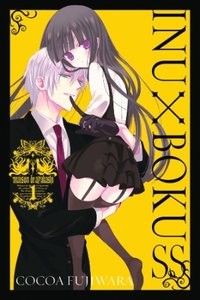
Vol. 1
(by Cocoa Fujiwara, Yen Press, $11.99)
FROM THE BACK COVER:
"In search of independence and solitude, the sharp-tongued Ririchiyo Shirakiin moves to the Maison de Ayakashi, an apartment building full of wealthy tenants, which has its own Secret Service. Ririchiyo is eager to be alone, but upon her arrival, she is greeted by Soushi, a SS agent arranged for her by her parents. Ririchiyo tries to turn Soushi away, but Soushi's dogged devotion to his new mistress will not be deterred. The threats against the residents of the Maison de Ayakashi are not to be taken lightly, after all. And despite his puppylike demeanor, Soushi is not to be trifled with..."
EVIDENCE FOR:
Inu x Boku SS sets a daring challenge for itself: take a main character whose defining personality trait is "not having much of a personality," and make her interesting. Ririchiyo's salty attitude is a start (it's her defense mechanism against being hurt by others), but it's the people around her that really bring this series to life. Some of them are obviously just comic-relief fixtures, like the lady servant who likes creeping on Ririchiyo because she's cute and tiny, or the first-floor tenant who thinks he's a hardcore gangster, but there are meaningful interactions among this ensemble as well. Soushi's over-the-top subservience seems comical at first, but it leads to more serious developments between him and Ririchiyo: the more she pushes him away, the more he tries to win her acceptance, and so an awkward little friendship is born. Visually, the series is quietly elegant—every character design is attractive, and the delicate lines seem to mirror Ririchiyo and her neighbors' upper-class lifestyle. Occasional touches of the supernatural (there's a good reason it's called Maison de Ayakashi) also spice up the artwork, with animal transformations and folkloric spirits popping up as pleasant surprises.
EVIDENCE AGAINST:
What does it feel like when a story doesn't have any actual story to it? Read Inu x Boku SS and you'll see. This volume introduces a number of characters, but doesn't really do anything with them—they just live together in that apartment house and deal with the ups and downs of life. Any attempt at conflict is cursory at best; when Soushi protects Ririchiyo from would-be criminals in Chapter 1, that situation counts for about 5% of the chapter while the other 95% is Soushi desperately following Ririchiyo around. And it's not like the subsequent chapters do anything to build upon this. Later on, it's still Soushi trying to win Ririchiyo's favor, only in different situations and with different side characters. Actually, even a hint of drama with the side characters would be an improvement, because all they ever do is joke around with each other. Coincidentally, the bland storyline is accompanied by equally bland art—what passes for "elegant" or "clean" is really just a lack of shading and detail, along with dull backgrounds drawn by second-rate assistants. All this time spent on making the characters pretty, and then they ignore everything else.
FINAL VERDICT:
How do you even grade something that doesn't seem to consist of anything? This manga is attractive at first glance, but the plot is so weak that Volume 1 ranks a C-.
NO MATTER HOW YOU LOOK AT IT, IT'S YOU GUYS' FAULT I'M NOT POPULAR!

Vol. 1
(by Nico Tanigawa, Yen Press, $11.99)
FROM THE BACK COVER:
"Tomoko Kuroki naturally assumed she'd be popular when she got to high school ... but then cold, hard reality swooped in for the attack! Turns out all the popularity points she'd racked up in her video game dating sims are worth squat in real life, and Tomoko's far from prepared to navigate high school! How can she possibly hope to impress her classmates when she can't even talk to them? A new high-school heroine is born (maybe?)!"
EVIDENCE FOR:
Can we just call it Watamote? No matter how you title it, Tomoko's misadventures are a laugh riot—not because they glorify social awkwardness, or brutally mock it, but because they're just so damn true. Even her inner monologue hits disturbingly close to home, as if Nico Tanigawa had crawled into the head of a self-conscious teenager and distilled those thoughts into a fictional character. The series also squeezes in some sly pop culture references, adding another dimension of real-life geekiness to Tomoko: she knows her video games and anime, and takes them way too seriously. Yet there's also a poignant side to all of Tomoko's struggles in life: she reminisces about better days with an old friend from middle school, and hopes that a positive interaction with a boy means she's still got a chance. In the end, though, it's still a comedy at heart, especially with Tomoko constantly mugging and making ridiculous reaction faces. The character designs of Tomoko's classmates are also quite varied, showing how all the social cliques around school differ in their sense of style (even though she dismisses all her peers as generic "popular kids").
EVIDENCE AGAINST:
The problem with characters like Tomoko is that we've all had enough of the "geeky outcast" gimmick already. What's more, her inner ramblings are more fluff than anything else, with endless streams of one-sided dialogue padding out each chapter. It eventually gets to the point where it's hard to tell whether Tomoko's mishaps are meant to be funny ... or just plain pitiful. If it's the latter, that's no good at all: laughing at a character just because she's not a super-extroverted, ideal heroine is mean-spirited, ill-earned humor. The lack of story progression also makes it hard to stay invested in Tomoko's adventures: she makes no real attempt at self-improvement, and her escapades don't build upon each other. (There's even a chapter subdivided into plotless single-page scenes.) The bland artwork outside of the main characters also makes it hard to enjoy the visuals—this manga survives on barely existent backgrounds and only minimal touches of shading. The page layouts also show very little effort: just the same rectangles lined up over and over, charting a rather dull life.
FINAL VERDICT:
Despite the thin plot and shoddy artwork, this series still offers some pretty sharp opinions (and raucous gags) about the struggle to survive high school. It gets away with a B-.
TEGAMI BACHI: LETTER BEE

Vol. 15
(by Hiroyuki Asada, Viz Media, $9.99)
FROM THE BACK COVER:
"Amberground is locked in darkness. A man-made star casts only a dim light over the land. The pitch-black wilderness is infested with Gaichuu—colossal insects with metal exoskeletons. The Gaichuu make travel between the cities of Amberground extremely dangerous. But thankfully the Letter Bees, a brave corps of messengers, risk their lives in order to keep the hearts of Amberground connected.
Searching for the truth about Amberground, Lag heads home to the little town of Cambel. There, a woman named Sabrina Mary holds the secrets he seeks. But can he handle what he learns about his world, his government...and his own mother?"
EVIDENCE FOR:
First came the truth about Letter Bees. Then the truth about Amberground. And in this volume, Tegami Bachi drops the hammer by revealing the truth about Lag Seeing himself. It's always a thrill to discover the protagonist's true goal, but this series makes it extra special by mixing genres: Lag's origin story involves myth, magic, conspiracy theories, and human drama. It also connects the plot right back to the earliest chapters: Lag visits his old hometown, reunites with his aunt, and learns numerous shocking truths. Amidst these revelations, the series' political rebellion subplot also charges ahead at full force: a probe into Gauche Suede/Noir's mind yields some intriguing fruit, spurring the higher-up Bees into action. The surreal artwork is also as enjoyable as ever, especially during flashbacks and dream sequences—distant lands, magical effects, and twinkling stars give Lag's origin story a fairytale aura. Hiroyuki Asada shows a versatile touch with character design, going from bold comedic figures to the classical beauty of Lag's mother. This has always been an imaginative series, but who know that the creator's imagination ran so deep?
EVIDENCE AGAINST:
Here comes a tired old gimmick: a message from a departed relative, intended for the main character when he's "old enough to know." Of all the methods to reveal an important plot point, why'd they have to pick such a common one? Then, of course, Lag learns why he is the Chosen One (not quite using those exact words), destined to go on a world-spanning quest. How disappointing: all this buildup, all these creative flourishes, just to reveal that the main character's purpose in life is like every other adventure saga. Then there are the flourishes that get a little too creative: the story behind Lag's birth is so far-out, so cosmic, that it doesn't really fit in with the series' steampunk-meets-spiritualism aesthetic. Instead, it's a strange, unsettling moment where the story simply tries too hard. The art also has its moments of pushing the envelope too far: Lag's memories of his mother lead to abstract layouts that don't tell a proper story , but instead are composed like random collages of images and text.
FINAL VERDICT:
Yes, it's the familiar "This is why the hero is the hero!" revelation, but the stunning art and sense of wonder still make it worthy of a B.
VINLAND SAGA

Vol. 1
(by Makoto Yukimura, Kodansha Comics, $19.99)
FROM THE BACK COVER:
"As a child, Thorfinn sat at the feet of the great Leif Ericson and thrilled to wild tales of a land far to the west. But his youthful fantasies were shattered by a mercenary raid. Raised by the Vikings who murdered his family, Thorfinn became a terrifying warrior, forever seeking to kill the band's leader, Askeladd, and avenge his father. Sustaining Thorfinn through his ordeal are his pride in his family and his dreams of a fertile westward land, a land without war or slavery...the land Leif called Vinland."
EVIDENCE FOR:
Is there ever a good reason to have a 300-page flashback? When it's as masterful as the one in Vinland Saga, then YES. A violent opening chapter is a great attention-grabber, but after that, it's the tale of how Thorfinn lost his father that really shows the series' strengths. More than just a celebration of Viking fierceness, Thorfinn's back-story is also a primer on Scandinavian history, an action-packed seafaring adventure, and a heart-wrenching family drama. His father, Thors, is easily the most compelling character in the book: a fearsome warrior, but also a compassionate and noble man, whose sense of justice was ahead of its time. Just read the part where Thors lays down his life for his son and try not to tear up—this is what true heroism looks like. Still, for those who prefer a more concrete picture of heroism, there's plenty of intense medieval combat in these chapters, featuring weapons as diverse as crossbows, shortswords, spears, and good old bare fists. In addition, the historically accurate outfits, striking scenery, and subtle details help to pull readers into this world—and once you're in, you'll never want to leave.
EVIDENCE AGAINST:
Could a powerful tale of a father's love have its flaws? Of course. The lead-up to Thors and Thorfinn's adventure is where this volume falls flat, focusing more on common scenes of Viking life rather than exciting or emotional moments. Later on, when the time comes for Thors to go on his ill-fated quest, it's part of a setup so convoluted that the enemy characters seem to be explaining each other why it has to be such an elaborate plot. Meanwhile, the 60-page opening chapter suffers from the opposite problem—instead of being too complex, it's too simple, marching from one skirmish to the next in an effort to prove how amazing this Viking story is going to be. The plot behind it seems like a flimsy excuse at best; the real story doesn't really start until we delve into Thorfinn's childhood. The early chapters also slack off on backgrounds too much, either leaving too many areas blank, or blindly using speedlines on everything when there's an action scene.
FINAL VERDICT:
It takes some time pick up steam, but once the story is in motion, it's a masterpiece of action and drama. Go ahead and pay for the hardcover, because this is true A- material.

BOKU WA MARI NO NAKA (I'm Inside Mari)
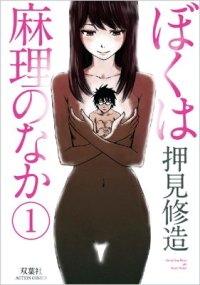
Vol. 1
(by Shuzo Oshimi, Futabasha, ¥630)
FROM THE ENCYCLOPEDIA:
"The manga follows an 'angel-like' beautiful high school girl with a certain secret she has been hiding from everyone, and an idle hikikomori (one who abnormally avoids social contact) young man. The highlight of his day is seeing Mari at the convenience store. The story begins as Mari wakes up in her room, but something feels amiss about the room and even her own body."
EVIDENCE FOR:
First, Shuzo Oshimi upended the high school romantic comedy with Flowers of Evil. Now he does the same to body-switch sitcoms with Boku wa Mari no Naka. Although not as depraved as the former, it's still full of the emotional unease that is Oshimi's trademark. Gone are the dumb old gags that usually come with the body-switch subgenre; instead, the series imagines how people would really react to waking up in a strange house with someone else's life. As "Mari" tries to navigate through her daily routine, her discomfort comes through in every situation—it's simply bizarre trying to imitate the way someone else eats breakfast, gets dressed, and goes to school or work. Suspense also enters the story when Yori, one of Mari's classmates, realizes something's wrong and demands to know the truth. The art is as restrained as the storytelling—classrooms, bedrooms, and town streets are all drawn in realistic detail, highlighting Mari's mundane existence. Yet the characters' nuanced expressions reveal plenty about their emotions, and the dramatic changes in panel layout add impact to scenes that might otherwise be ordinary slice-of-life fare.
EVIDENCE AGAINST:
The first thing anyone will notice is how slow this series is. Sometimes it takes a five full pages for Mari to carry out a single action, after carefully pondering her entire purpose in life. This slow pacing is especially hard to bear because most of the story involves everyday activities: getting out of the house, walking to school, chatting with friends. In short, everyone has to sit through Mari's weekday routine before the drama really starts. The choice of main characters in this story may also have some readers feeling burnt-out—why is it always a geeky guy and a gorgeous, unattainable girl? Even if this is Oshimi's "thing," his creative skills would probably be more convincing if he could come up with a new ... thing. And while the visuals are highly polished, they lack any real energy—the desire to stick to perfect slice-of-life realism robs the art of its vitality. Between the precisely sketched rooms and typical teenage cast, is there any visual detail that catches one's attention? Maybe that'll have to wait until next volume.
FINAL VERDICT:
It gets off to a slow start, but for those who like Oshimi's twisted take on school life (and his stylized realism), this series is clearly worth a look.
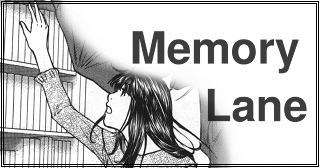
WISH
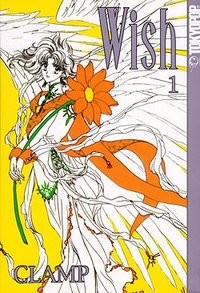
(by CLAMP, Tokyopop)
Maybe it's a sign of my advancing years, but I still consider CLAMP one of the major creative forces in manga (even if their age of dominance has long since passed). So it's a good thing that publishers like Dark Horse, Viz, and Kodansha Comics are helping to keep the CLAMP oeuvre in print.
They missed one, though.
Wish is a four-volume series that starts out like a feel-good fairytale: a twentysomething doctor named Shuichiro saves the life of an angel named Kohaku, who in return offers to grant him any wish. Shuichiro insists that he doesn't really need anything right now, but ever-hopeful Kohaku decides to hang around until Shuichiro thinks of a wish he can't fulfill on his own. Eventually, other denizens of the angel and demon world follow Kohaku's trail and bring their drama with them—most notably a higher-ranked angel who's fallen in love with a demon. Not surprisingly, this handful of characters grows into a complex relationship map where everyone is connected to everyone else. Feelings of love, longing, jealousy, and regret run high in this series, and it doesn't take long to become invested in all of the characters. The ending is where the story really shines, though, with a dramatic twist and strong emotions all over place (even if some clichéd elements come into play).
At first glance, the artwork fits the usual CLAMP stereotypes—doe-eyed angels, a wide-shouldered male lead, plus sparkles and feathers wherever they can squeeze them in. But those who recognize the subtleties of CLAMP's art will realize that Wish has a style all its own—neither as intense as X nor as sweet as Cardcaptor Sakura, and bearing little similarity to any of their later works. The linework is often elaborately curved, but there's also a lightness and simplicity that reflects the series' optimistic tone. Oh, and the angels and demons in chibi form are insanely cute. Hopefully Wish will get re-licensed and compiled into an omnibus someday—it'd be a shame for an entire generation of fans to miss out.
discuss this in the forum (16 posts) |